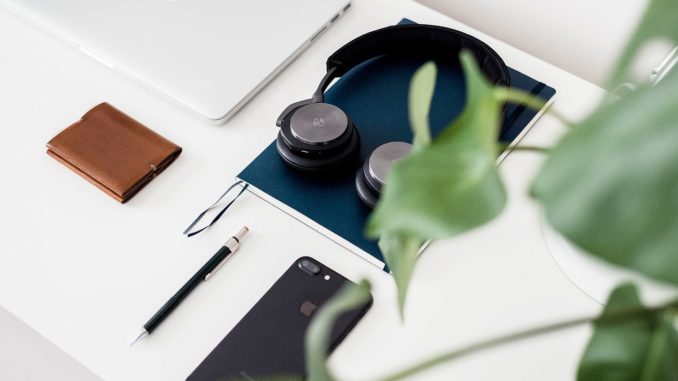
By Lloyd Coldrick, MD of Cobus
The continued blur in work/life balance has contributed to unprecedented levels of poor mental health among young people in the UK. Gone are the days of the traditional 9-to-5 job, as more employees stay connected to their work around the clock through digital technology such as smartphones and tablets.
By having the resources to work 24/7, the risk of exhaustion – or ‘burn out’ – amongst young people through overworking has naturally increased. Research in the Journal of Abnormal Psychology recently found a significant rise in depression in young people aged between 12 to 25, while the Mental Health Foundation recently revealed that about 70% of those experiencing depression and anxiety have had no appropriate support and intervention.
With millennials predicted to make up half of the workforce by next year, businesses need to tackle this troubling issue by ensuring their workplaces offer an environment that nurtures employee mental health and wellbeing: an office designed around the user. One of the most fundamental ways in which businesses can ensure stress amongst young people doesn’t spiral out of control and become a mental health issue, is by offering a workplace environment that promotes their wellbeing from the get-go.
Creating an office space in which young people can flourish will boost overall wellbeing and its links to increased motivation and productivity. After all, if a workspace is designed to promote employee wellbeing, the business will, in turn, experience greater growth.
The ‘biophilic’ approach is one of the most popular methods of developing a healthy and positive environment in the workplace. Biophilic stems from the word ‘biophilia’, meaning a ‘love of nature’, and was coined by German psychologist Erich Fromm before being popularised by American psychologist Edward O. Wilson in the 1980s. He pointed at how the rapid rise of urbanisation was making us more and more disconnected from nature.
As humans, we have a deep-rooted biological connection to nature, so outdated, cubicle-style office designs can affect our overall health and wellbeing. It’s no secret stress-related illnesses are a major contributor of disease, but when we think of nature, it provokes thoughts of an environment full of calmness and relaxation. Some businesses have used this to their advantage by bringing the outdoors into the office.
Shifting to a more open, human-centered approach which incorporates features such as large, open window views and natural materials such as wood, stone and water features, can soothe and inspire the mind. In fact, research into the health benefits of biophilic designs, carried out by Bill Browning, founding member of the US Green Building Council’s board of directors, and Sir Cary Cooper, CBE professor of organisational psychology and health at Lancaster University, found an overwhelming increase to employees’ wellbeing.
Incorporating direct or indirect elements of nature into the workplace were found to reduce stress, blood pressure levels and heart rates, whilst increasing productivity and creativity. Furthermore, research by the Journal of Experimental Psychology, found that by adding just one plant per square mile in an office, employees were 15 per cent more productive than those without plants in their workspace. Indoor greenery will also vastly improve air quality, which not only benefits the surrounding environment, but the employees’ overall health.
So, there’s a good reason behemoth corporations such as Google, Apple and Amazon invest heavily in biophilic designs that nurture health, wellbeing and productivity amongst their young employees.
It is estimated that most people in the developed world spend as much as 90 per cent of their time inside buildings and cars. But according to UK mental health charity Mind, being out in green spaces can help reduce feelings of stress or anger, making young people feel calmer, while also improving their confidence and self-esteem.
Therefore, designing an office to have an outdoor area where employees can enjoy more natural light and take in the open views of their surroundings, will naturally invoke positive feelings.
Private outdoor areas within a company’s grounds or public areas outside office buildings can inspire and soothe the mind while offering a positive distraction from the desk.
Just by being outdoors young employees will instantly benefit from a higher intake of vitamin D, which keeps bones, teeth and muscles healthy, reducing the chance of developing bone deformities in later life such as rickets. Air quality is also greatly improved outdoors, and the change of scenery can boost motivation.
However, it is not just biophilic designs that can help tackle poor mental health amongst young people nowadays, as businesses gain a deeper understanding into how they can merge varying designs to create spaces that prioritise the employee.
Young people entering employment can now benefit from quiet spaces, where employees working overtime can unwind and break up their shift, while co-working spaces look to empower the employee through acknowledging their work/life balance and commitments with flexible working; a destination workplace.
In addition, recreational breakout zones where staff can take some time away from the screen to re-energise themselves, whether that be through unwinding on comfy furniture, socialising with colleagues or even playing games such as pool or table tennis, can improve wellness and alleviate stress.
Ultimately, by enhancing spaces to reduce stress and boost overall wellbeing and safety, businesses can ensure the mental health of their young employees is nurtured; creating a happy, healthy work environment.
Don’t forget to follow Dealer Support on Twitter!

Be the first to comment